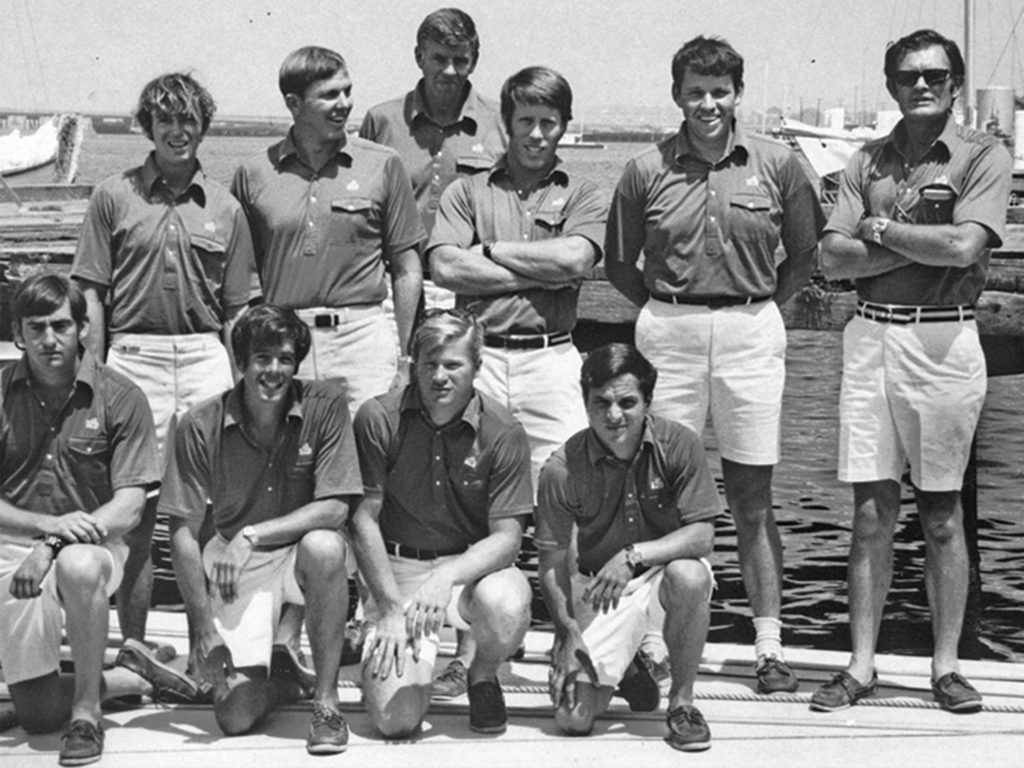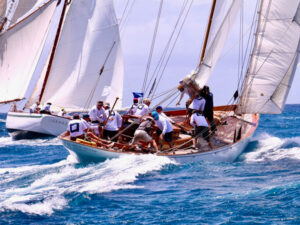
Charley Morgan picked up on the first ring.
Three years ago, while doing research for my latest book—a biography of sailing greats Steve and Doris Colgate called Off shore High—I placed a call to the legendary Florida sailor, boatbuilder and raconteur, hoping to get some insight into his one and only America’s Cup campaign, aboard Heritage in 1970. That campaign was 50 years earlier, and Morgan was now 90, so I wasn’t really expecting much. I could hear the age in his voice, for sure, but after I explained the reason for my call, I also recognized a fresh perkiness.
“Oh, that was quite a summer,” he said. And over the next hour or so, it was crystal- clear that he remembered every bloody bit of it.
Morgan, who forged a fabled career of his own in just about every facet of the marine industry, passed away shortly after the new year, and I was so grateful to have had the opportunity to chat with him before he did. Along with being one of the most successful racing sailors of his generation, he left an indelible mark on the cruising world.
I met the man just once, on the night Dennis Conner won back the America’s Cup in 1987 in Fremantle, Australia. Morgan was tall, gregarious and as handsome as a movie star, and my lasting memory of the day was not Conner’s victory but knocking back a couple of cold ones and talking boats and sailing with him.
Of course, I already knew a lot about him, as did everyone working in the boating business at the time. He got his start as a sailmaker, opening the Morgan Racing Sails loft in St. Petersburg, Florida, in 1952. And he was already a fierce competitor on the racecourse. This anecdote accompanied his nomination for the National Sailing Hall of Fame: “Charley was so aggressive at the tiller, a competitor once said that he wouldn’t have let his mother win even an insignificant race. Fortunately, Mom didn’t sail.”
Where he really made his mark, however, was as a builder and designer. He founded Morgan Yacht Corp. in 1965 and ultimately designed more than 50 boats—sail and power. None was more influential than the one he created specifically for the fledgling bareboat charter business, the Morgan Out Island 41, of which more than 1,000 were built.
Ironically, the only arena in which he ever failed to roll the competition was in the America’s Cup aboard Heritage, the drop-dead gorgeous wooden 12 Metre he designed and built himself (and aboard which Steve Colgate was recruited as tactician in the waning stages of the campaign). Short on time and money, Morgan actually sailed the boat, hardly an offshore cruiser, from Florida to Rhode Island for the event, which is as crazy as it sounds. But she sure was pretty (and is to this day).
After an early trial race in which Heritage was creamed by Intrepid, which went on to defend the Cup, Steve Cady of The New York Times wrote, “Heritage (at least) won first prize in the beauty contest. Her mahogany hull glistened in the hot sunlight and her light-air spinnaker was the prettiest seen so far, a top-to bottom dazzler of blue, orange and white.” That was the dark cloud’s silver lining. Otherwise, Cady concluded, “at day’s end, Morgan was shaking his head like a baseball pitcher who has started a game by serving home run balls on the first two pitches. …These are only preliminary trials [but] on the basis of today’s developments, it would appear Heritage has a long way to go.”
Morgan and his labor of love never got there. “I’d been fascinated by the America’s Cup since I was a child,” Morgan told me. “But I stretched myself too thin with technical things. But I don’t have any regrets about it, that’s for sure.”
My only regret is that I didn’t spend another couple of hours talking with him that day, and moved the conversation away from the Cup and into his long and stellar career. For Charley Morgan was nothing less than an American original. And our sport and pastime grew and flourished from his presence.








